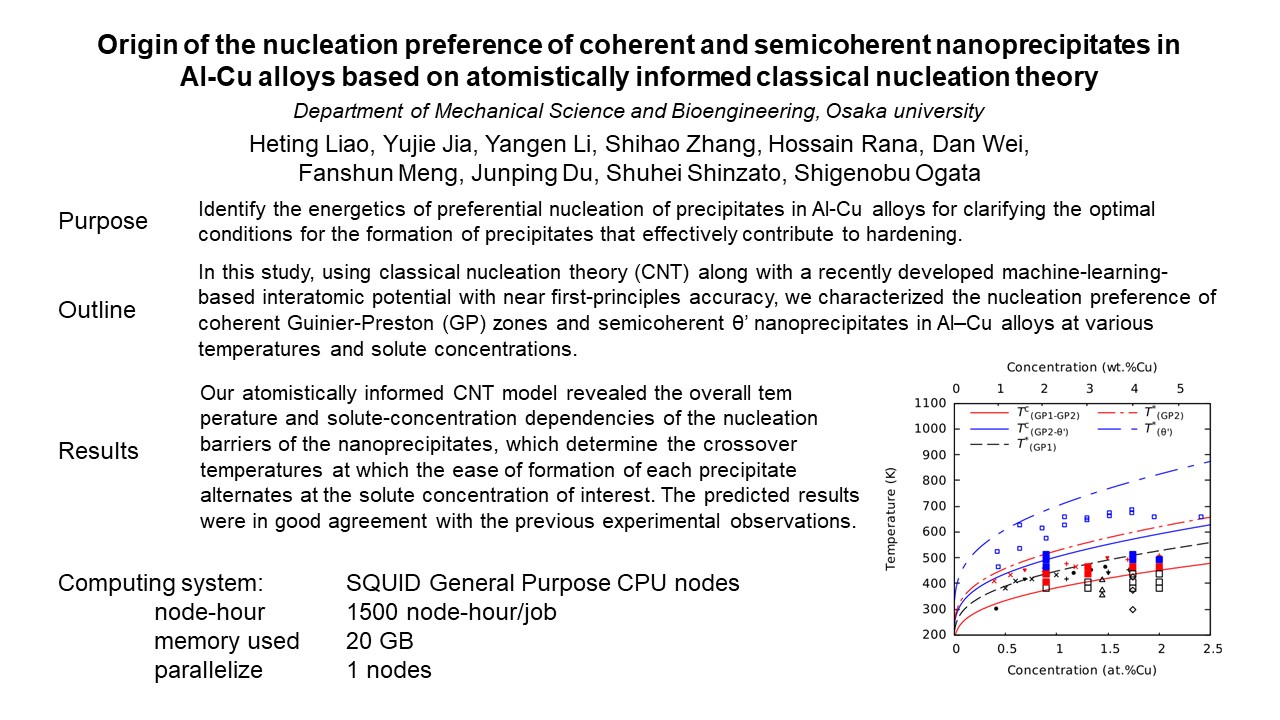Affiliation:Department of Mechanical Science and Bioengineering, Graduate School of Engineering Science, Osaka University.
Abstract:The age-hardening response during the heat-treatment process of Al–Cu alloys is significantly and non- linearly influenced by the type and size of metastable precipitates formed. In Al–Cu alloys, a semicoherent phase, usually observed after the formation of coherent Guinier–Preston (GP) zones during aging, is the key strengthening precipitate. Thus, identifying the energetics of preferential nucleation of these precipitates is essential for clarifying the optimal conditions for the formation of precipitates that effectively contribute to hardening. In this study, using classical nucleation theory (CNT) along with a recently developed machine-learning-based interatomic potential with near first-principles accuracy, we characterized the nucleation preference of coherent GP zones and semicoherent θ’ nanoprecipitates in Al–Cu alloys at various temperatures and solute concentrations. Our atomistically informed CNT model revealed the overall temperature and solute-concentration dependencies of the nucleation barriers of the nanoprecipitates, which determine the crossover temperatures at which the ease of formation of each precipitate alternates at the solute concentration of interest. The predicted results were in good agreement with the previous experimental observations. The findings of this study contribute to furthering the understanding of the driving forces for nucleation of precipitates in Al–Cu alloys at an atomic level and provide theoretical guidance for identifying the optimal age-hardening response.
Publication related to your research:
(Journal paper)
- Heting Liao, Hajime Kimizuka, Hiroshi Miyoshi, Shigenobu Ogata, “Origin of the nucleation preference of coherent and semicoherent nanoprecipitates in Al–Cu alloys based on atomistically informed classical nucleation theory”, Journal of Alloys and Compounds, Vol. 938, pp. 168559, Mar. 2023.
Posted : March 31,2023


